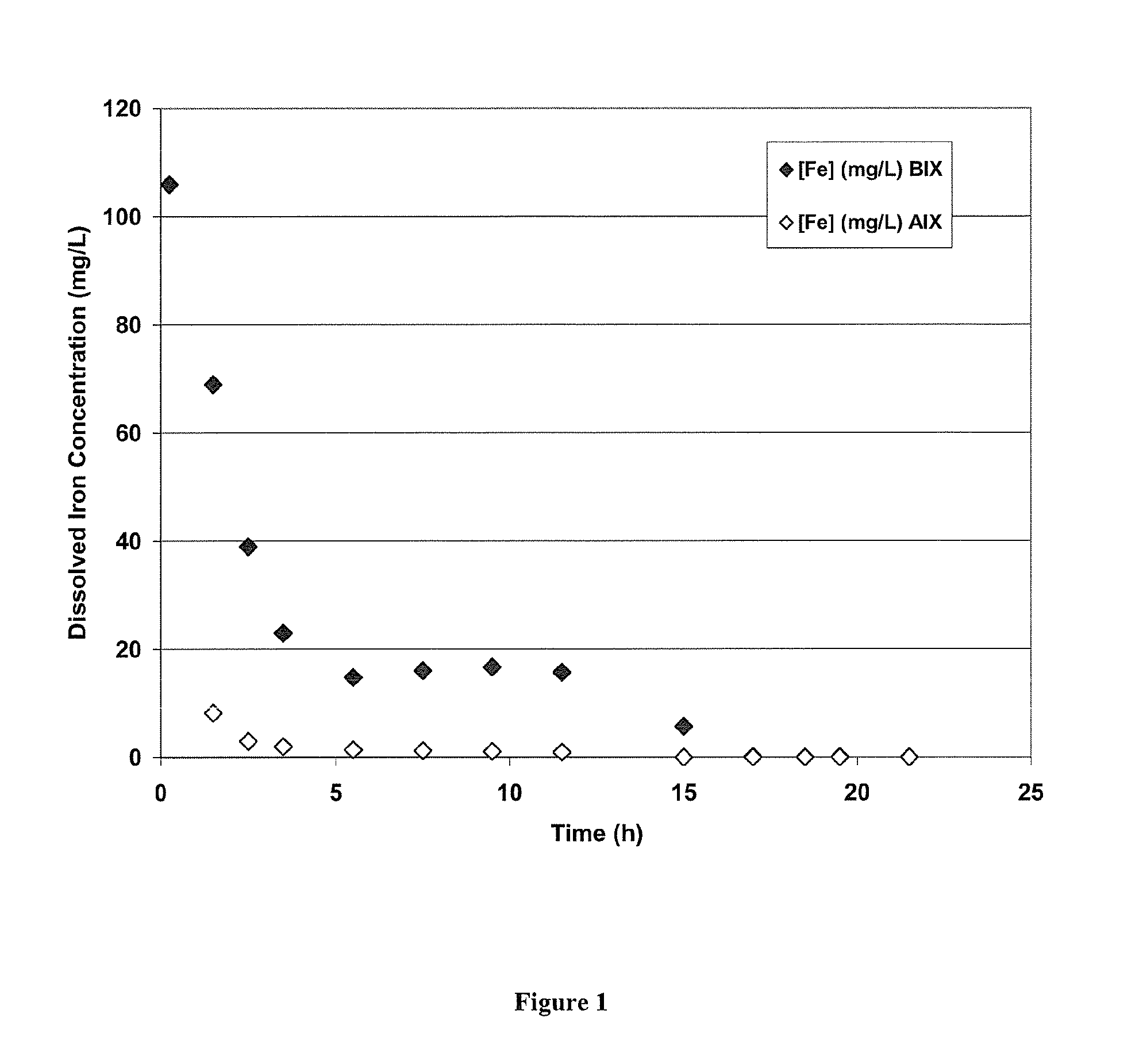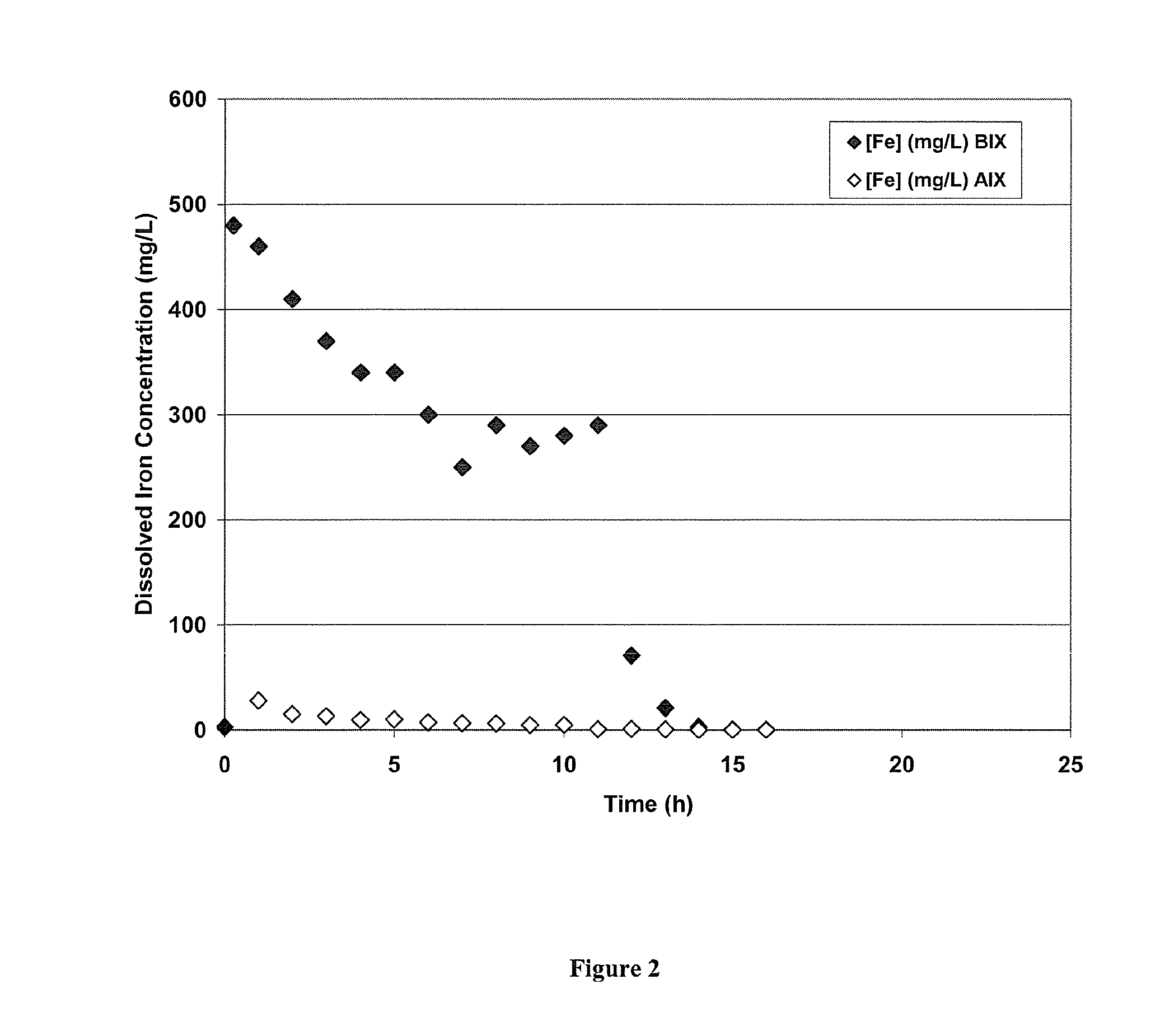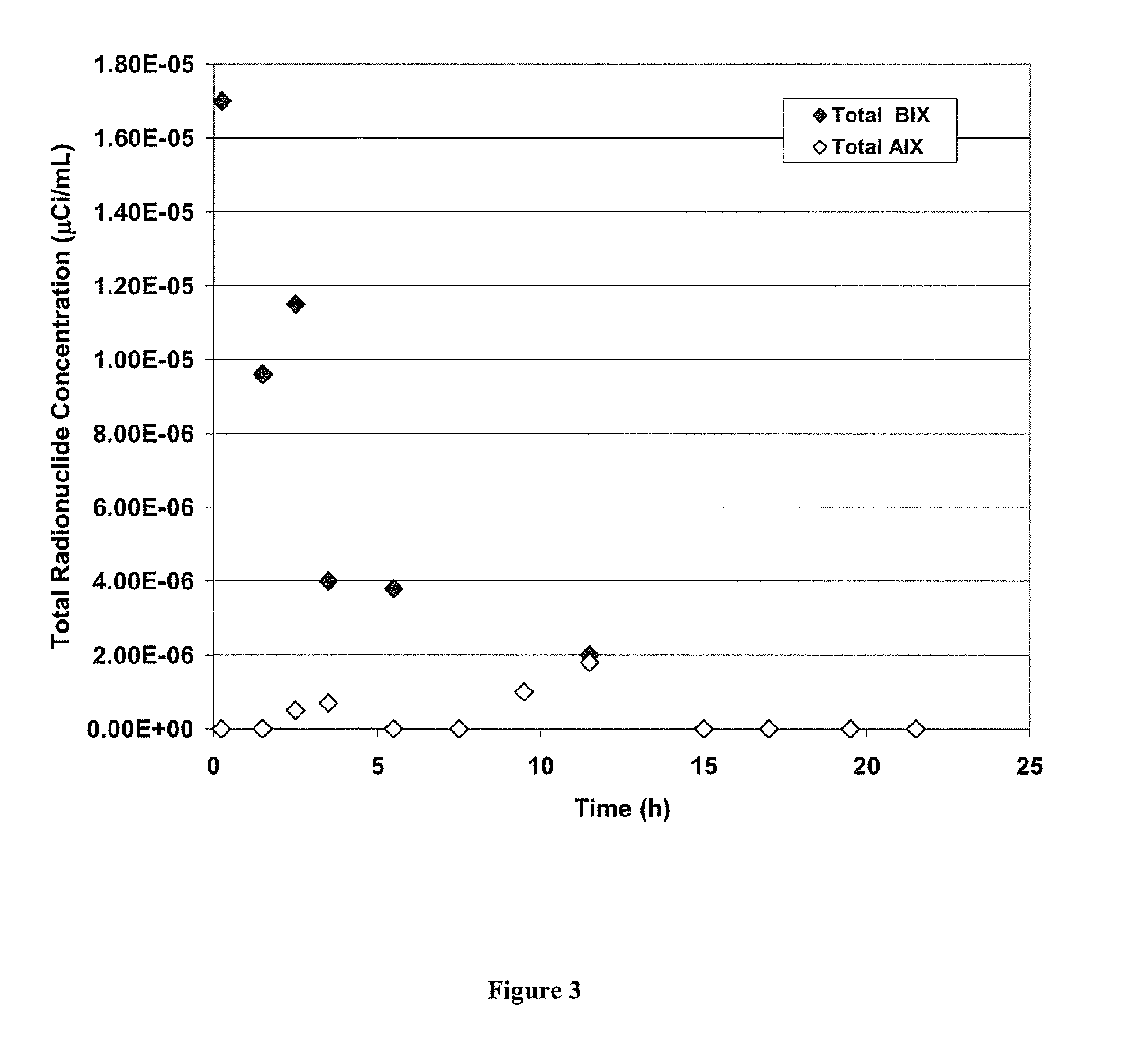Reactor decontamination process and reagent
a decontamination process and reagent technology, applied in the direction of cleaning processes and equipment, reactor fuel elements, nuclear energy generation, etc., can solve the problems of reduced flow rate, reduced heat transfer properties, corrosion of base metals and high radiation fields, etc., to reduce the amount of time required for decontamination and reduce shut-down time
- Summary
- Abstract
- Description
- Claims
- Application Information
AI Technical Summary
Benefits of technology
Problems solved by technology
Method used
Image
Examples
example 1
[0056]A series of bench top corrosion tests under static conditions were performed to determine corrosion rates of Monel-400 and SA106 Gr. B carbon steel in various decontamination reagents. Monel-400 is the material used for steam generator tubes in some CANDU steam generators, and SA106 Gr. B is the material used for feeder pipes and headers in all CANDU reactors. Both materials are susceptible to corrosion under acidic conditions. These corrosion tests were performed at 90° C. under a nitrogen atmosphere. A corrosion inhibitor was not added to the reagents in these tests to obtain conservative corrosion values. Two different concentrations of citric acid (2 g / L and 20 g / L) were tested in the presence of 1.8 g / L of EDTA. The average corrosion rates, based on weight loss measurements during the 24 hour tests, are summarized in Table 1.
TABLE 1Corrosion Rates (μm / h) of Monel-400 and SA106 Gr.B Carbon Steel after Exposure to Reagent FormulationsMonel-400SA106 Gr. BTest Solution(μm / h)(...
example 2
[0058]Various reagent formulations were evaluated in the loop runs and bench top tests. Parameters that were examined included Rodine™ 31A, a commercial corrosion inhibitor (0, 100 mg / L, 225 mg / L), hydrazine concentration (0 and 20 mg / L), and pH (2.2 and 3.5). Hydrazine is a reducing agent and is also used as an oxygen scavenger. In addition, in some tests, dissolved iron (Fe), nickel (Ni) and copper (Cu) were added to the reagent to simulate faulted chemistry. The corrosion rates of Monel-400 and SA 106 Gr. B carbon steel materials exposed to two such solutions during the loop runs are summarized in Table 2.
TABLE 2The Corrosion Rate (μm / h) of Materials in Two Loop TestsMonel-400SA106 Gr. BTest Solution(μm / h)(μm / h)A. 2 g / L citric acid, 1.8 g / L EDTA with0.10 ± 0.010.79 ± 0.05100 mg / L of Rodine ™ 31A and 20 mg / Lof hydrazineB. 2 g / L citric acid, 1.8 g / L EDTA with0.13 ± 0.0120.2 ± 6.1 Fe / Ni / Cu
[0059]During the loop tests, the linear velocity of the reagent through the test section which ...
example 3
[0060]Loop runs and bench top tests were complemented by electrochemical investigation of Monel-400 and carbon steel corrosion in the reagent containing 2 g / L citric acid and 1.8 g / L EDTA (the “dilute decontamination reagent”). The compatibility of steam generator materials, steam generator welds and stressed carbon steel specimens were evaluated to determine the extent of general corrosion of Monel-400 and primary side steam generator materials, and localized corrosion damage, e.g., cracking, pitting, intergranular attack, etc.
[0061]Disc electrodes machined from a section of a feeder pipe made of SA106 Gr. B, and cylindrical Monel-400 electrodes prepared from Monel-400 rod, were used for the corrosion studies of carbon steel and Monel-400, respectively. The electrodes were rotated at either 1500 or 2000 rpm during the potential scan experiments to promote mass-transport to and from the electrode. A jacketed glass electrochemical cell, heated by a recirculating water bath passing th...
PUM
 Login to View More
Login to View More Abstract
Description
Claims
Application Information
 Login to View More
Login to View More - R&D
- Intellectual Property
- Life Sciences
- Materials
- Tech Scout
- Unparalleled Data Quality
- Higher Quality Content
- 60% Fewer Hallucinations
Browse by: Latest US Patents, China's latest patents, Technical Efficacy Thesaurus, Application Domain, Technology Topic, Popular Technical Reports.
© 2025 PatSnap. All rights reserved.Legal|Privacy policy|Modern Slavery Act Transparency Statement|Sitemap|About US| Contact US: help@patsnap.com



